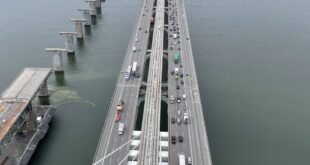Rail network is a very important asset in any country’s economy. Railway transportation is gaining attention as a promising solution to cope with the mobility challenges in large urban areas Because of that, it is important to guarantee the sustainability of its operations and activities.
The high complexity of railway transportation entails a number of challenges, in particular from
security and privacy perspectives. Railway assets could be an attractive target for terrorism. As a result, coping with strong security and privacy requirements and integrating physical security with cybersecurity
is of utmost importance.
In this article, I walk you through what goes around security in rail industry, and of course, it is about the security of users, workers and equipment.
Rail network assets
They are the same as within the entire railway systems:
- Railway stations
- Rails tracks
- Rail tunnels
- Rail yards
- Signalling infrastructure
- Communications infrastructure
- Trains
- Subways
- Power stations
- Control stations
- Maintenance stations
- Ticketing stations
At first glance, we notice how big the system could be. After all, it is a rail network, by nature it must be extended on a very big geographic areas.
Therefore, for a security system teams to which I belong, many new challenges are emerging what it comes to secure railways’ industry facilities. Because that requires high security for many buildings and assets in a single system. This is very challenging, since we have to combine many security devices and sensors, in addition to process all kind of information coming from different sources.
Thanks to technology evolution, we can connect several sub systems together and many independent systems and gather all information and signals coming from them into one unified platform. As a result, there is not any need for an army of operators or as many screens and monitoring stations.
Technologies involved in rail network security
- Access control
It prevents users and personnel from entering in spaces they are not supposed to. Access control system is installed in all parts of the network. It is also configured to facilitate access for in emergency situations for first responders. In addition, it allows users to evacuate in dangerous cases or breakdowns.
- Anti-intrusion
The Anti intrusion system prevents any presence on the railway. In fact, animals or humans could venture on rail and disturb the operations.
- CCTV
CCTV systems is a very important component of a security system. The integration between the intrusion and access control systems provides the possibility to see on real time all alerting situations. For example, an intrusion signal, pop-ups a video streaming of the area on the operator screen.
- SCADA
SCADA stands for: Supervisory Control And Data Acquisition. It is a collection of both software and hardware components that allow supervision and control of plans remotely and locally. It also examines collects and processes data in real time.
Furthermore, it is composed of remote terminal units and programmable logic controllers that interact with on field devices. Therefore, that help operators in the decision-making.
- IT network, cybersecurity
The railways nowadays are intelligent systems. With the Internet of things (IoT), vehicles, roads, traffic signals, etc., are interconnected to improve management systems (e.g., traffic management systems and traffic signal control systems).
The industry should provide efficient toll and ticketing systems, detect and alert incidents automatically, enhance guidance and assistance services and develop predictive systems based on advanced modelling techniques, among others. Hens the risk of cybersecurity. As a result, the challenge is bigger to prevent cyber-attacks, so the physical security must interact with the cybersecurity because the normal operations of the system are important to keep working.
Read our article on physical security and cybersecurity
What are the risks and the threats related to rail networks
Many threats and risks are hovering on rail networks. The security teams should maintain an efficient security management plan that encompasses:
- Business processes, incident response plans, regulations and policies foresees.
- The continuity of operations of the network and its processes.
- Protection of network Traffic
- Security-related information from across the network, devices and cloud layers to spot suspicious anomalies and provide insight into threats
The challenges of rail network security are preventing :
- Sabotage, and terrorist attacks
- Technical breakdowns
- Security of users and of workers
- cybersecurity
- intrusion
Click here to read more on the subject
